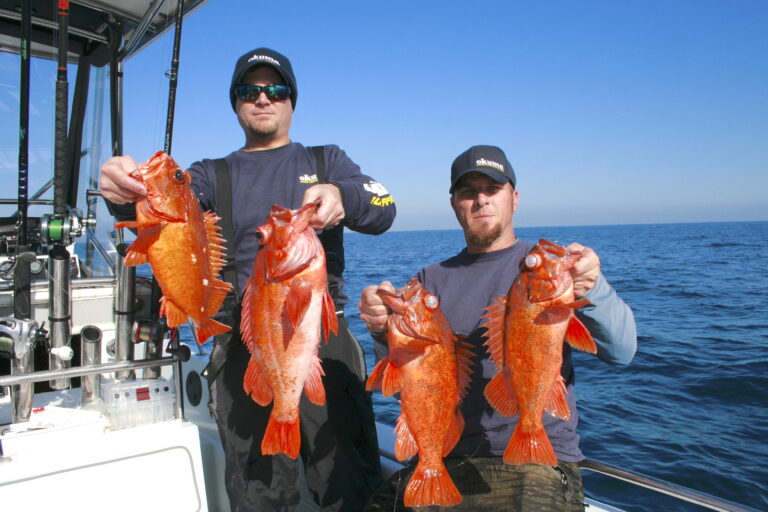SACRAMENTO (May 23, 2005) – United Anglers of Southern California (UASC) President Tom Raftican, attorney April Wakeman and fishery consultant Bob Osborn today submitted an alternative “red-lined” version of the MPA Master Plan Framework developed by the Blue Ribbon Task Force at a California Fish and Game Commission meeting near the state capitol.
Wakeman remarked that the changes made by UASC to the original Master Plan Framework, although minor, go a long way in creating a resource management plan that will be reasonable, effective and enforceable. “We believe the Fish and Game Commission should consider our alternative plan,” Wakeman said.
“It is important for the commission to know we support the overall goals of Marine Protected Areas,” said UASC President Tom Raftican. “We want to see it work to protect fish and recreational fishing,” he emphasized. The focus of changes made to the Master Plan Framework by UASC involve recognizing current California fishing regulations in place throughout state waters, then in light of these protections, declaring all state marine waters to be one large marine protected area.
Earlier Wakeman and Raftican presented a formal letter of request outlining the logic, resource management and enforcement benefits of this plan to Blue Ribbon Panel Chairman Phil Isenberg. A central point of the letter was that the entire coastline is already protected in one way or another, and designating it as a protected area would allow the state to manage ocean resources on an ecosystem basis rather than species by species. It also highlighted the fact that California leads the nation in progressive fishery management legislation. Destructive bottom trawling, gill nets and pelagic long lines are banned in the majority of state waters and in the few areas where this gear is allowed, regulations are in place to phase out, modify or restrict them to achieve sustainable fishing. While these forward-looking regulations are nearly identical to those that designated the fabled Georges Bank as an MPA, to date California has failed to adopt the comprehensive outlook that correctly categorizes our already substantial efforts as marine protected areas.
“California’s marine waters are already protected to a very high degree and recognizing these protected areas is critical to any management plan moving forward,” said Tom Raftican, President of UASC. “Our existing regulations form a solid base that needs to be counted before we even begin discussing any new round of closures,” he added.
“California leads the nation with a nearshore fishery management plan, bottom trawl legislation, and the use of conservation areas that set high standards that promote biodiversity and habitat protection,” reported Osborn. “The next logical step is to consolidate the complex authorities and mandates and bring all state waters under a single regulatory process with the Fish and Game Commission’s proactive management standing at the core of resource protection. While new protected areas may be necessary, they must include this strong base to effectively tie it all together and provide for timely adaptive management,” Osborn added.
UASC President Tom Raftican made the following recommendations to the commission:
1. In view of the dramatic proposed changes, ask the governor for a reasonable timeline extension so that this process can be carried out in concert with stakeholders and not in the courts.
2. Move to review and potentially adopt the non-controversial sections of the draft Master Plan.
3. Send Sections 2, 3 and 7 back to the Blue Ribbon Task Force for more work. UASC will host a workshop to look at a more comprehensive approach to governance and funding, and examine the concept of larval dispersion networks.
4. Ask the Blue Ribbon Task Force to evaluate the benefits of creating a state waters California protection area.
More information can also be obtained by contacting UASC headquarters at 5948 Warner Avenue, Huntington Beach, CA 92649. Telephone: (714) 840-0227. Website: www.unitedanglers.com.









